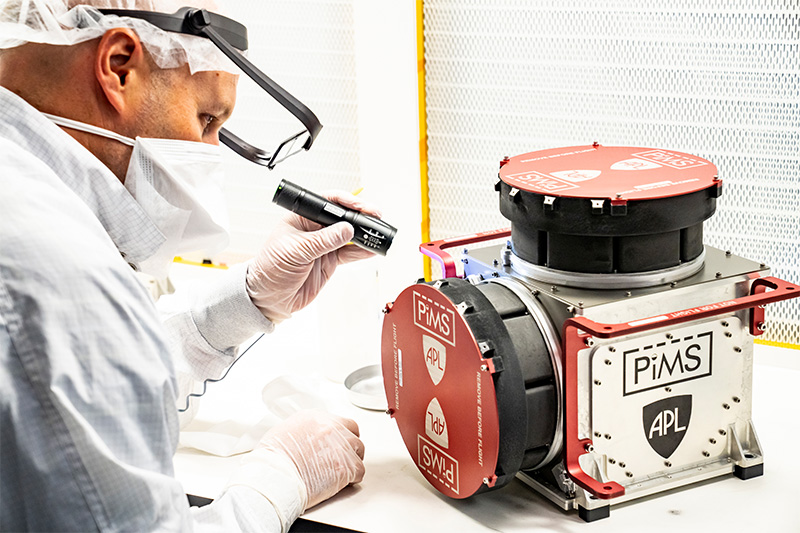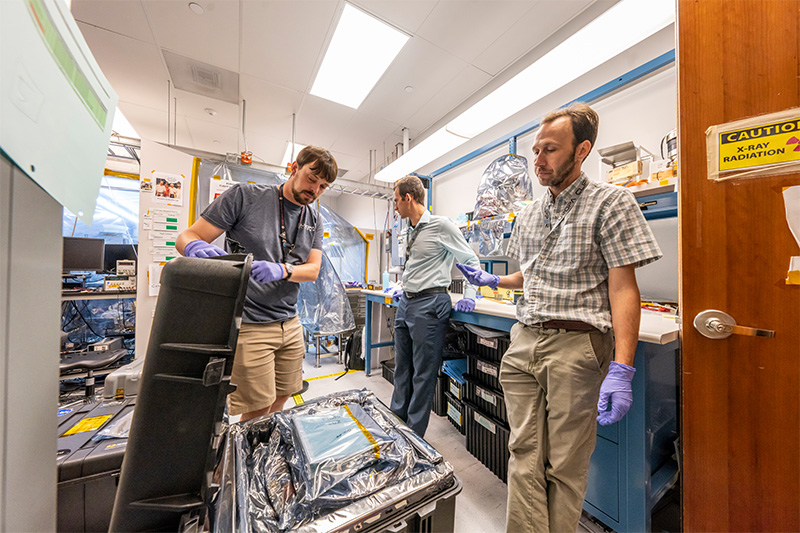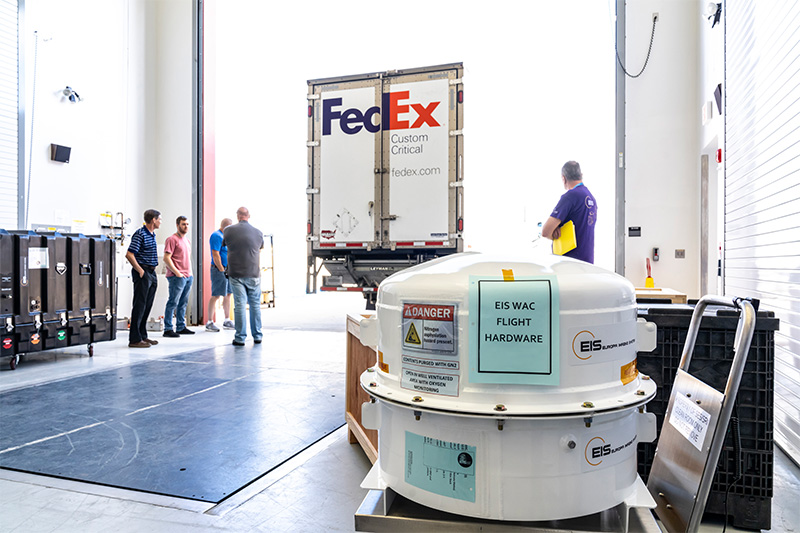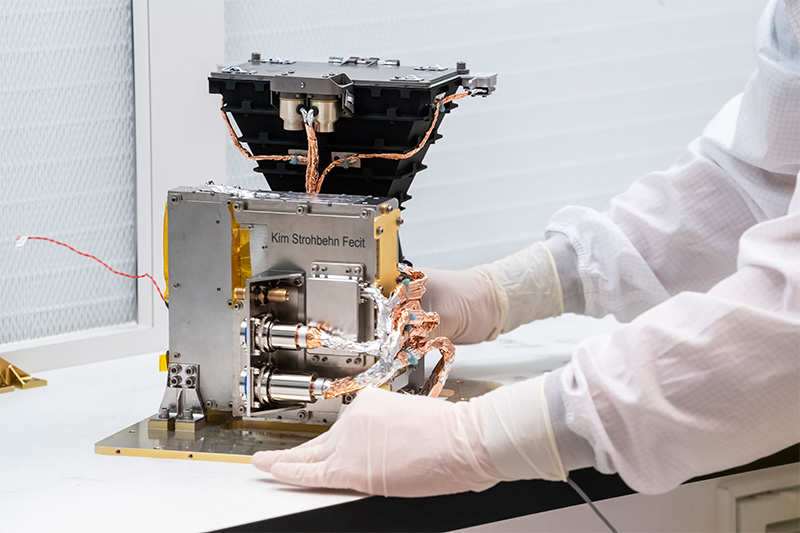The WAC — one of two cameras in the spacecraft’s Europa Imaging System (EIS) — has one of the largest sensors to be flown in deep space: an 8-megapixel sensor that can capture color and stereoscopic images as good as about 23-feet (7-meter) per-pixel resolution.
A refractive telescope, the WAC captures light directly, passing it through a series of lenses built to withstand Jupiter’s radiation and focusing the light on a metal-oxide semiconductor like those found in cell phones and digital cameras. The camera will capture wide swaths of Europa’s landscape on every flyby, providing new information about materials and geologic features on the surface.
Although multiple missions have already imaged Europa, they’ve captured only about 15% of its surface at even moderate resolution, and very little of it in color or stereo, said APL planetary scientist Zibi Turtle, EIS’s principal investigator.
In combination with its narrow-angle counterpart, the WAC will image roughly 90% of Europa’s surface at better than 330 feet (100 meters) per pixel, providing an unprecedented global data set of Europa’s geology.
Using those images, scientists will determine what geologic processes acting in the ice shell might have created (or continue to create) Europa’s many surface features.
“We can use these images to understand the individual landforms and relationships between different landforms, and the better we understand the landforms, the better we can put constraints on the structure of the interior,” Turtle explained.
In coordination with the mission’s radar team, the camera will help scientists interpret structures beneath the surface and search for fresh deposits from Europa’s purported water vapor plumes, which, if found, would reveal an ongoing exchange between the subsurface water and the icy surface. Finally, the WAC will help identify ideal landing sites for a potential future lander mission.
APL is a partner in the development of NASA’s Europa Clipper, which JPL leads for NASA’s Science Mission Directorate in Washington. The mission is managed by Caltech in Pasadena, California. The Planetary Missions Program Office at NASA’s Marshall Space Flight Center in Huntsville, Alabama, executes program management of the Europa Clipper mission.
Learn more about Europa and Europa Clipper here.



